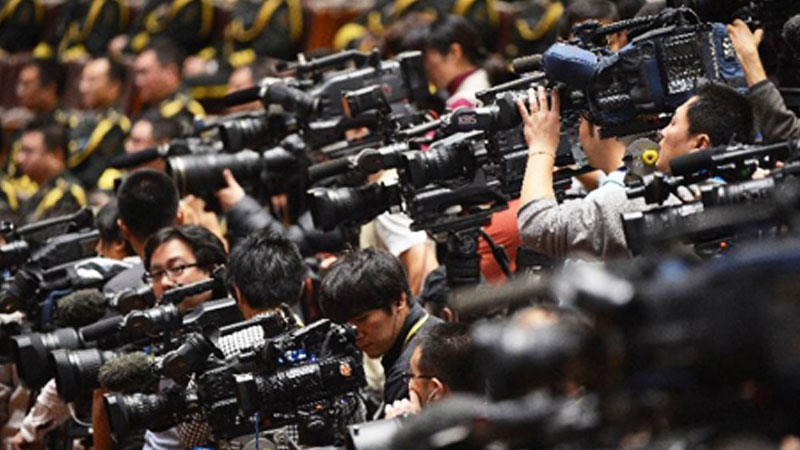China continues to work on the expansion of its global influence: earlier this month, Beijing announced the launch of a new mega-broadcaster — via merging its largest state television and radio stations — to improve its international image.
The single media conglomerate called the “Voice of China” will be formed based on three state-run media outlets: China Central Television (CCTV), China National Radio and China Radio International. The new entity, which has more than 14,000 employees, is tasked with “[publicizing] Communist party theories, guidelines and policies” and “[enhancing] international broadcasting capacity,” according to the state-run news agency Xinhua.
“This reconfiguration of state media platforms is mostly about consolidating the Party’s control over messaging, both at home and overseas,” David Bandurski, co-director of the China Media Project and a fellow of the Robert Bosch Academy, told The Globe Post. “This follows a general trend under Xi Jinping toward greater centralization of power structures.”
CCTV was previously supervised by the General Administration of Press, Publications, Radio, Film, and Television (formerly known as SARFT), an executive branch under the State Council. But the new entity will serve as an institution directly under the State Council, and it will be led by the Publicity Department of the Communist Party of China.
“Ostensibly the strategy of the Voice of China is to ‘purify’: to counter unofficial reports from within China or the so-called ‘fake news’ that is spread about China globally,” Michael Keane, professor of Chinese media and cultural studies at Curtin University, told The Globe Post.
He further explained that this is not the first time that China combines its national networks. In 2016, CCTV International has morphed into the China Global Television Network (CGTV) with more than 70 overseas bureaus. The formation of “Voice of China” is part of the same consolidation and alignment strategy.
Over the past several years, in an effort to ensure its voice is heard, China has been heavily investing in a global soft power campaign, while also tightening Internet censorship at home. More than 500 Confucius Institutes have been established across the world to promote Chinese language and culture.
Moreover, the country has become the third most popular destination for international students in 2017. President Xi Jinping has been also promoting the idea of “the Chinese Dream” and “China Model” worldwide.
At the same time, CGTV is commissioning a large number of documentaries about life in China and advertising for “foreign” voice-over experts with a $230 payment per 25-minute episode, according to Mr. Keane.
“In the wake of President Xi’s latest ascendancy is a move to align the key state-owned media apparatus with a vision of cultural and political orthodoxy, hence the soporific name Voice of China,” he said.
The restructuring is part of a broader institutional plan, called “Program for the Deepening Reform of Party and Government Organs,” which has recently been approved by China’s rubber-stamp parliament.
Under the plan, Beijing will further tighten its control over entertainment and publications, as the Party’s Publicity Department will directly oversee film, news and publishing work.
“It’s likely however that the global reputation of the Voice of China will be diminished by association with a regime that is tightening the boundaries of what can be said while pouring money into propaganda heavy film, TV and documentary,” Mr. Keane said.


